Such was the remoteness of the farm that we visited on a recent trip to China, that upon landing in Beijing airport, we still faced two internal flights totalling six hours and a two-hour car journey to our destination.
Even then, in the city of Beitun, we were almost a two hours’ car journey from the farm.
Energy bars
I soon realised that the note on the trip itinerary advising that we “bring some energy bars because there will be a lot of travel” was not in jest.
What also became apparent quite quickly was that the communication mediums that we took for granted back home such as WhatsApp, Twitter, Facebook, Snapchat and Google were redundant here.
Xinjiang region
The Chinese have developed domestic versions of these media platforms, and the scale of China became apparent when we learned that WeChat, the favoured mode of communication in China, has more active users than worldwide favourite WhatsApp.
The farms we visited were located near the borders with Kazakhstan, Russia and Mongolia, in the autonomous region of Xinjiang.
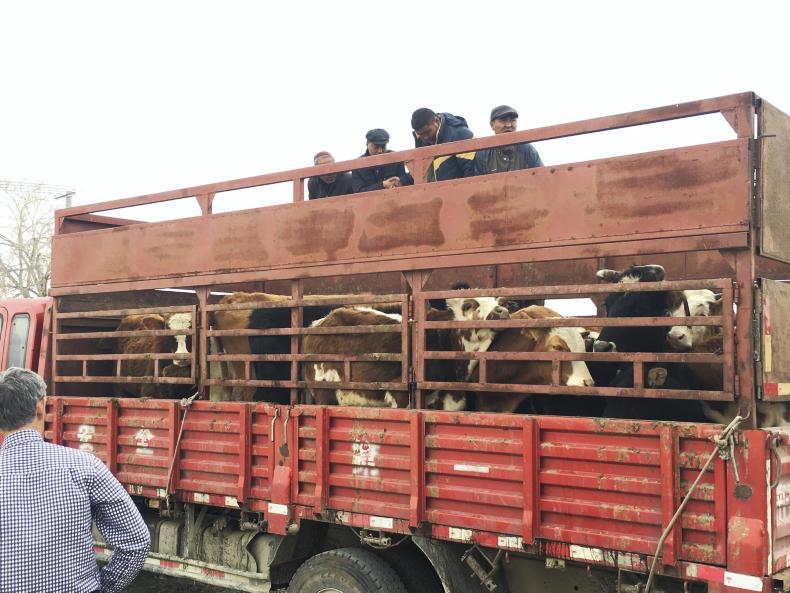
A pop-up cattle mart on the side of the road.
An autonomous region is an administrative division that has a particularly high population of one or more ethnic groups. Xinjiang is 21 times the size of the island of Ireland and accounts for more than one-sixth of China’s total territory. Less than 10% of its land area is actually habitable by humans and it has a population of 22 million people.
Cow herd
As well as a study tour, we were there to help with the establishment of a beef cow herd.
The company in charge wants to establish a 15,000-cow herd across three locations. The animals will be kept in enclosed systems with access to outdoor yards, on maize-based diets. We advised them on genetics, breeding plans, husbandry and nutrition.
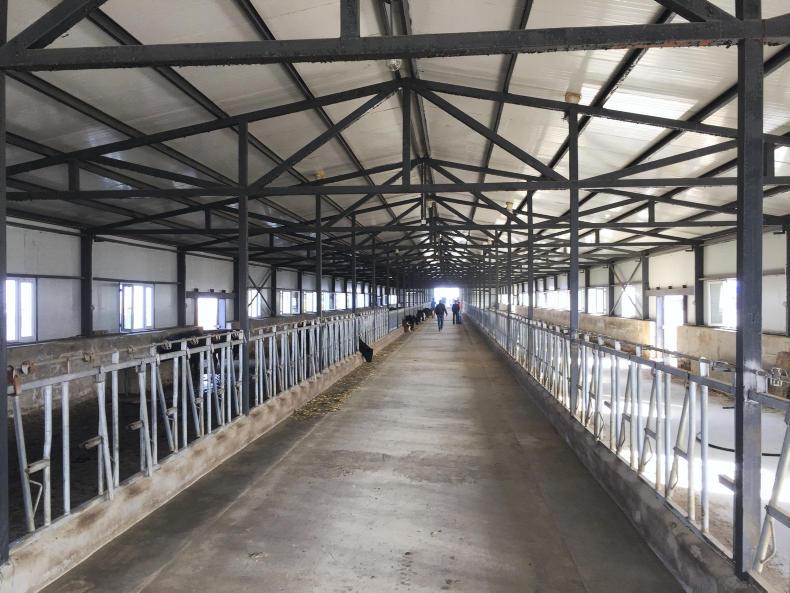
Inside a 19-bay cattle shed.
Beef in China
Where is the Chinese beef industry at?
With an approximate herd of 60m cattle, China’s beef inventory is the third largest in the world. Yet, in terms of scale and efficiency of production and processing, China lags far behind.
The top three beef processing companies here in Ireland process over 80% of the beef produced on our shores annually. In China, a net beef importer, the sector is much less developed. Here, the top three beef companies collectively produce less than 0.5% of the beef consumed in the country.
However, much like the Chinese dairy industry, the beef sector is going through significant reform and consolidation. This is being driven by a consistent and growing demand for beef in China, where changing dietary habits are providing some unique opportunities for the growth and expansion of beef operations.
Smuggling
China gets its beef via domestic production, certified imports and grey channels.
Because of the huge latent demand for beef in China, and due to India’s huge dairy herd and low beef consumption, there is widespread smuggling of both live cattle and frozen beef through the border between China and Vietnam.
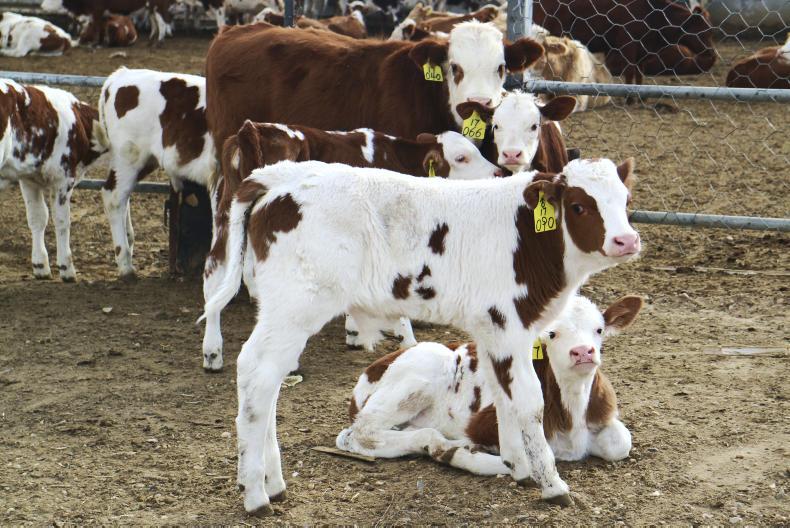
Young Simmental calves on the farm.
On the higher end of the market, US and European beef is regularly smuggled through the ports of Hong Kong. The government is aware of these issues, which cause major problems for traceability and food safety.
Irish beef?
China is a prime target market for net exporters of beef across the world – in particular Australia and Brazil.
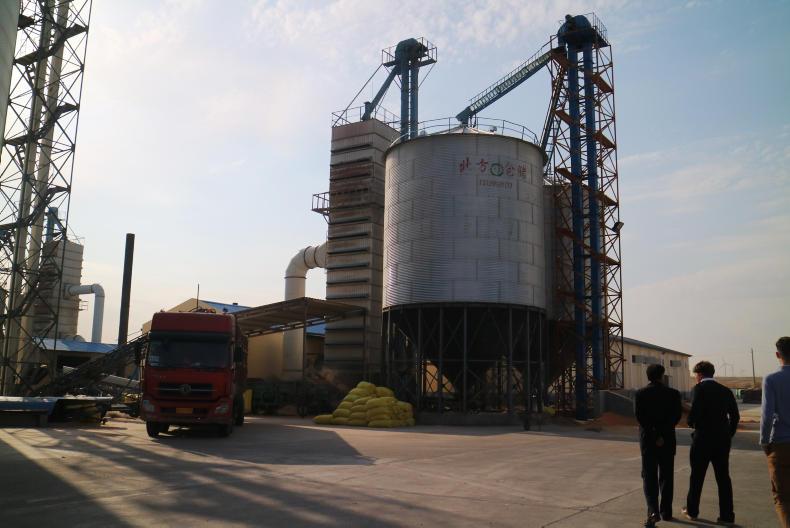
Grain dryer on one of the farms we visited. Excellent crops of maize are grown in the region.
Brazilian beef wins on price competitiveness, but with the challenge to JBS, the Chinese players are continuously looking for new sources of beef.
After several years of negotiations, Ireland received the green light to export beef to China in April 2018. Much has been made of the potential for Irish beef in China. Once some technicalities are tied up, Irish beef exports to the market are expected to commence in the coming weeks.
Read more
The accidental Russian beef tycoon from Alabama
Watch: behind the scenes at a 1,200 calf veal shed
Eight of the World’s biggest farms
Such was the remoteness of the farm that we visited on a recent trip to China, that upon landing in Beijing airport, we still faced two internal flights totalling six hours and a two-hour car journey to our destination.
Even then, in the city of Beitun, we were almost a two hours’ car journey from the farm.
Energy bars
I soon realised that the note on the trip itinerary advising that we “bring some energy bars because there will be a lot of travel” was not in jest.
What also became apparent quite quickly was that the communication mediums that we took for granted back home such as WhatsApp, Twitter, Facebook, Snapchat and Google were redundant here.
Xinjiang region
The Chinese have developed domestic versions of these media platforms, and the scale of China became apparent when we learned that WeChat, the favoured mode of communication in China, has more active users than worldwide favourite WhatsApp.
The farms we visited were located near the borders with Kazakhstan, Russia and Mongolia, in the autonomous region of Xinjiang.

A pop-up cattle mart on the side of the road.
An autonomous region is an administrative division that has a particularly high population of one or more ethnic groups. Xinjiang is 21 times the size of the island of Ireland and accounts for more than one-sixth of China’s total territory. Less than 10% of its land area is actually habitable by humans and it has a population of 22 million people.
Cow herd
As well as a study tour, we were there to help with the establishment of a beef cow herd.
The company in charge wants to establish a 15,000-cow herd across three locations. The animals will be kept in enclosed systems with access to outdoor yards, on maize-based diets. We advised them on genetics, breeding plans, husbandry and nutrition.

Inside a 19-bay cattle shed.
Beef in China
Where is the Chinese beef industry at?
With an approximate herd of 60m cattle, China’s beef inventory is the third largest in the world. Yet, in terms of scale and efficiency of production and processing, China lags far behind.
The top three beef processing companies here in Ireland process over 80% of the beef produced on our shores annually. In China, a net beef importer, the sector is much less developed. Here, the top three beef companies collectively produce less than 0.5% of the beef consumed in the country.
However, much like the Chinese dairy industry, the beef sector is going through significant reform and consolidation. This is being driven by a consistent and growing demand for beef in China, where changing dietary habits are providing some unique opportunities for the growth and expansion of beef operations.
Smuggling
China gets its beef via domestic production, certified imports and grey channels.
Because of the huge latent demand for beef in China, and due to India’s huge dairy herd and low beef consumption, there is widespread smuggling of both live cattle and frozen beef through the border between China and Vietnam.

Young Simmental calves on the farm.
On the higher end of the market, US and European beef is regularly smuggled through the ports of Hong Kong. The government is aware of these issues, which cause major problems for traceability and food safety.
Irish beef?
China is a prime target market for net exporters of beef across the world – in particular Australia and Brazil.

Grain dryer on one of the farms we visited. Excellent crops of maize are grown in the region.
Brazilian beef wins on price competitiveness, but with the challenge to JBS, the Chinese players are continuously looking for new sources of beef.
After several years of negotiations, Ireland received the green light to export beef to China in April 2018. Much has been made of the potential for Irish beef in China. Once some technicalities are tied up, Irish beef exports to the market are expected to commence in the coming weeks.
Read more
The accidental Russian beef tycoon from Alabama
Watch: behind the scenes at a 1,200 calf veal shed
Eight of the World’s biggest farms





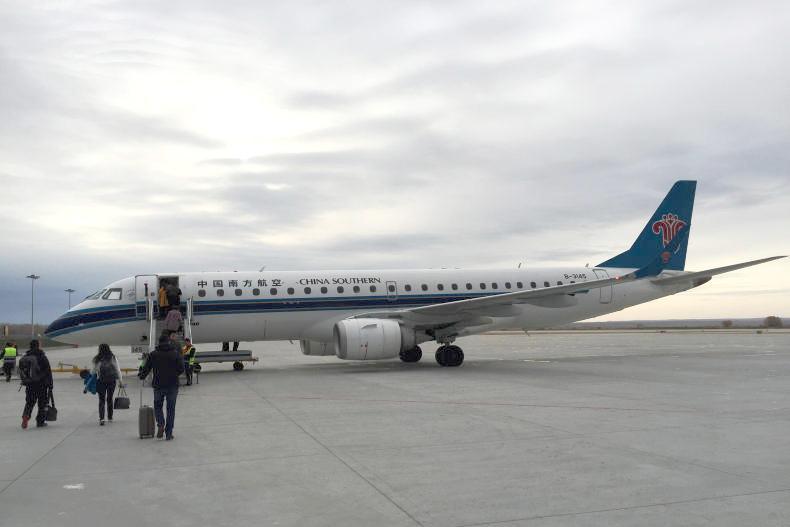




 This is a subscriber-only article
This is a subscriber-only article













SHARING OPTIONS: